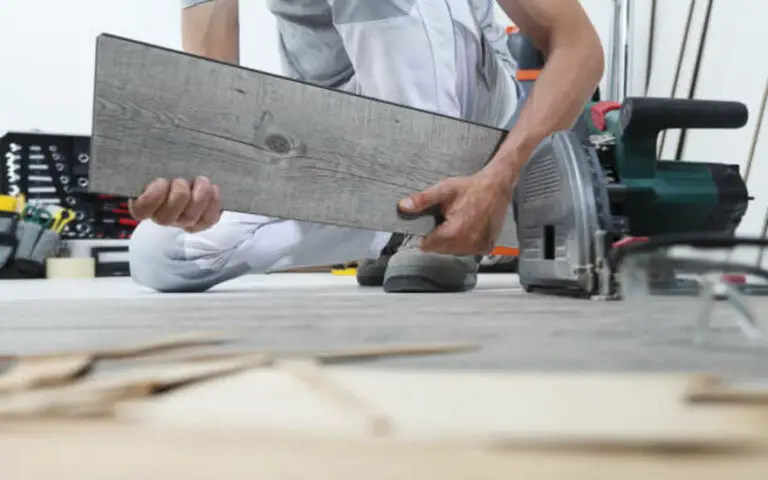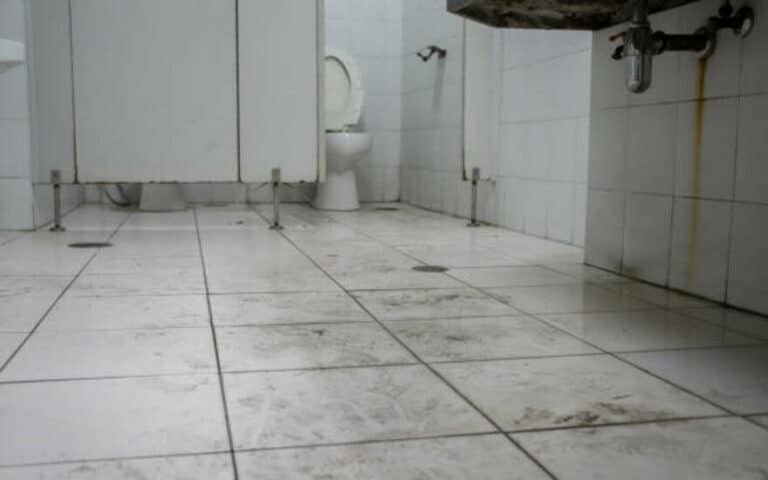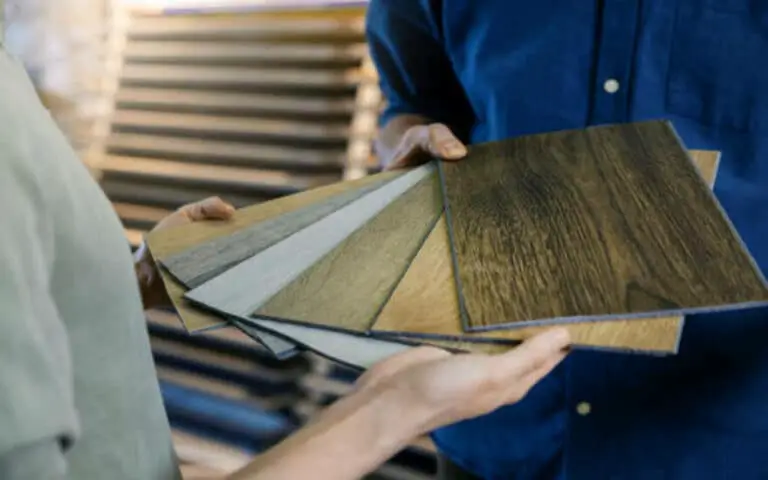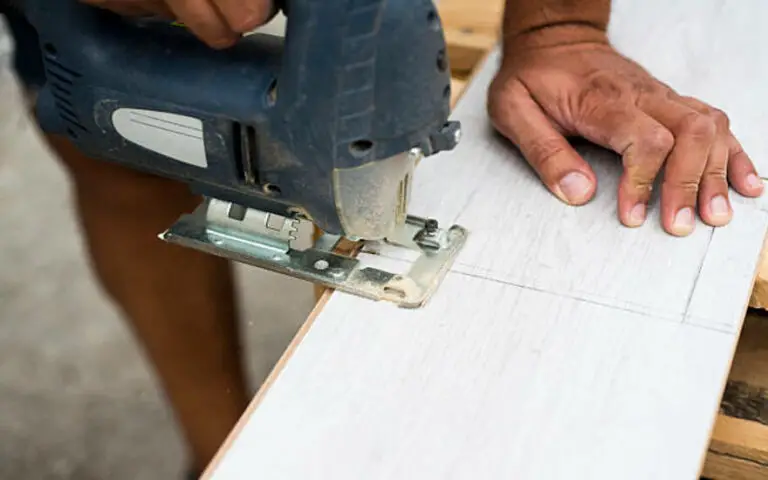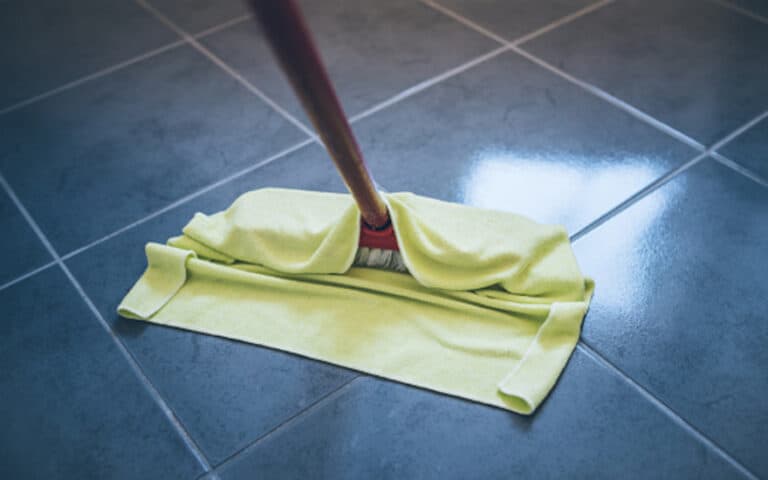When you think of a laminate floor, images of homes and offices come to mind. They’re beautiful, durable, and easy to install. The surface is made from layers of paper or plastic with an adhesive between each layer that’s heat-activated. In this article, we will discuss if laminate flooring is waterproof or not and its advantages and disadvantages. Keep reading to know more!
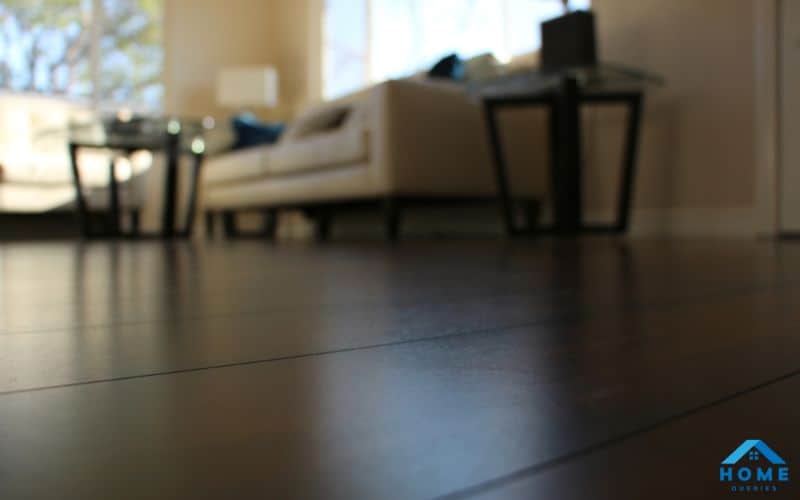
Here is the Answer-Is Laminate Flooring Waterproof?
The laminate floor was not waterproof. Because of this, the laminate floor could not be used in bathrooms or other areas where water might be present. However, some advancements have been made, and now there are waterproof types of laminate flooring. These laminate floors are ideal for bathrooms, kitchens, laundry rooms, and other areas where water might be present. Waterproof laminate flooring is an excellent choice for those who want the look of laminate flooring without the worry of water damage.
So, there you have it! Laminate flooring can be waterproof, but it all depends on the type of laminate flooring you choose. If you’re looking for a waterproof option, choose a floor marketed explicitly as waterproof. Otherwise, you run the risk of water damage to your laminate floors.
Why Laminate Flooring Wasn’t Waterproof?
Because of how laminate flooring is built, the seams and fiberboard core moisture are a problem.
The main issue with laminate flooring is the core, which is little more than a dense type of fiberboard, an engineered product made from wood fibers. If you’ve ever seen a sheet of particleboard in the rain, you’ll know how it bubbles up and crumbles like a wet soda cracker.
The click-and-lock joining method used in laminate flooring makes it difficult to achieve perfectly tight seams, adding to the problem. When water seeps past the surface layer, swelling and delaminating occur due to seam gaps plus a fiberboard core.
Many people are unaware that the moisture problem begins in the factory, not at home. Poor adhesion of the melamine wears layer results from high humidity levels in fiberboard particles during flooring production.
5 Tips Of How to Make Laminate Flooring Waterproof?
When you are installing laminate flooring, you need to take into account its water resistance. Not all laminate flooring is created equal, so you must select the right type.
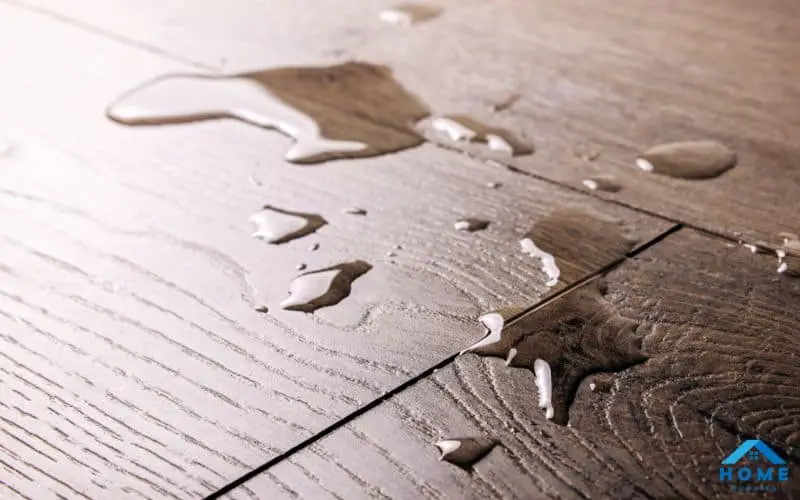
You can do 5 things to make your laminate flooring more water resistant.
1. Use Silicone to Prevent Damage
Silicone seals gaps together in a flexible and malleable manner. It may be used to seal any holes that allow water to seep in and cause damage. There are various silicone sealants on the market, so ensure you get one appropriate for your flooring. You can use the following silicone sealants:
| Product | Description | Price | Product Link On Amazon |
| The J–B Weld 31312 All-Purpose RTV Silicone Sealant Adhesive is an excellent choice for many projects. | This is a versatile glue that may be used for a variety of household tasks. | The price for this product ranges from $6.49 to $9.00. | Click Here |
| GE Sealants & Adhesives GE112A All Purpose Silicone 1 Sealant | This sealant is perfect for any weather conditions. It’s also flexible and robust, making it ideal for interior and exterior projects. | The price for this product ranges from $5.38 to $6.73. | Click Here |
| Red Devil 0820 Silicone Sealant | Silicone sealant in numerous hues is available and has a multi-purpose recipe with lengthy-lasting protection. | The price starts at $5.38 | Click Here |
2. Caulk the Expansion Gap
Caulk is a type of sealant that, like silicone, prevents water from entering your laminate floors. Caulking the expansion gap of your floor also protects it from smoke, moisture, and dust–making it better than silicone in those ways. However, unlike silicone (which can’t be painted over), you can paint over areas filled with caulk. Here are some caulking items you can buy online to waterproof your floor:
| Product | Description | Description | Product Link On Amazon |
| ColorSeal Oak | This caulk does not require a gun to operate, and different colors are available so that you can find one which best compliments your floor. | The price for this product ranges from $10.79 to $18.00. | Click Here |
| ClickSeal Click Joint Sealant | This caulk not only penetrates and coats the surface of laminate flooring but also offers an extra layer of protection to the joints. | The price starts at $18.31 | Click Here |
| Sashco 10008 BigStretch Caulk | This is a highly flexible product that doesn’t easily break. It comes in a variety of 13 colors. | The price for this product ranges from $9.80 to $10.64. | Click Here |
3. Cover the Top Coat With Polyurethane
Coating your laminate flooring may seem extraneous, but it’s an excellent way to safeguard the cumulated area. Polyurethane is one of the best materials you can use as a coating; it protects against water damage and provides your floor with a lustrous and sleek finish. If you want laminate floors that look like hardwood, this is ideal.
Polyurethane doesn’t work well with laminate flooring because it can’t adhere to the resin coating. To apply it, you must use a mop and let it dry. However, some manufacturers suggest two coats just to be sure. Although there is no concrete evidence, some reports say that polyurethane might be toxic to laminate flooring, so do your research before using it just in case.
4. Seal the Locking Mechanisms
PVA Type II glue is another method to make laminate flooring more water resistant. Make sure you get glue that doesn’t squeeze out too much product, so you don’t end up with dried adhesive spots.
This material also lets you seal the joints between the boards while installing it. You may easily lift the floors if necessary by applying this product.
5. Buy Waterproof Flooring
Waterproof flooring is the best type to buy for areas in your home susceptible to water damage, like kitchens and bathrooms. Not only is waterproof laminate flooring affordable, it will also save you money in the long run by avoiding water damage repairs.
Some brands are finding that they need to provide waterproof flooring, so they’re changing their fiberboard formulation. This new kind of flooring is more scratch-resistant and does a better job at looking like wood or stone.
Pros of Laminate Flooring That’s Waterproof
If your laminate flooring is made to be water resistant,
- it can withstand a lot of everyday wear and tear. Laminate flooring is an excellent choice for high-traffic areas, such as a kitchen or dining room.
- It can also be a good choice for areas with a lot of foot traffic, such as an entryway. You may want to consider laminate flooring if you have kids and pets or many visitors.
- It can withstand a lot of foot traffic and wet and muddy conditions. This can save you a lot of time and money when cleaning up.
Cons of Laminate Flooring That’s Waterproof
- One disadvantage is that laminate flooring is not as durable as other types of flooring. Laminate flooring is not as strong as wood, for example. It will last much longer than vinyl flooring, but it’s not as long-lasting as hardwood.
- Another disadvantage of choosing laminate flooring is that it’s more expensive than vinyl flooring. Vinyl flooring is generally cheaper than laminate flooring. That’s because laminate flooring is water resistant. It’s more expensive because it’s made with layers of paper or plastic.
- The designs and colors are very restricted. You might not be able to find the perfect match for your home.
- It is not 100% waterproof, but it is more water resistant. If there is a large spill, it can damage the floor.
Waterproof Laminate Cost
On average, waterproof laminate flooring costs $3 to $5 more per square foot than standard laminate. The industry average for waterproofing is about $4.50 per square foot, while regular laminate averages about $2.50 an sqft. Similarly, luxury vinyl plank flooring also has an increased cost of about 3$/sqft on average.
You will pay a premium for any type of ‘waterproof’ flooring product, whether it be Laminate or vinyl.
Maintenance and Repair of Waterproof Laminate
If you decide to go with waterproof laminate flooring, you’ll need to take care of it just like any other type.
You’ll want to sweep or vacuum your floor regularly and mop when necessary. You can use a water-based cleaner on laminate flooring so long as you don’t leave it on for too long.
You should vacuum or sweep your laminate flooring at least once a week.
If you have pets, you’ll want to clean them more often.
If you have kids, you’ll want to be even more careful. Kids often make a mess, so you may want to mop your laminate flooring more often. If you accidentally scratch, dent, or scuff your laminate flooring, you can repair it.
You may also consider hiring a professional to clean your laminate flooring.
With any laminate floor, repairs are tricky. Severe damage often takes the entire floor apart to replace the broken boards.
Design Of Waterproof Laminate
There are far fewer choices for waterproof laminate flooring than for standard or luxury vinyl planks. There are only a few dozen patterns and colors for genuinely waterproof laminate flooring compared to hundreds for regular laminate flooring or high-end vinyl plank.
In addition to the design, you should also consider the thickness of the laminate flooring. The thicker the laminate flooring, the more water resistant it is. You can find laminate flooring with a thickness of about 3/4” or 1”. Laminate flooring with a thickness of 3/4” will be less water resistant than laminate flooring with a thickness of 1″. Keep that in mind when choosing a design.
Waterproof Laminate Installation
Waterproof laminate is installed using the same click-lock method as regular laminates. You start at one wall and lay the planks across the floor, interlocking the edges with a clicking motion. This creates a floating floor that isn’t glued down. In most cases, you’ll need to put thin foam underlayment over the subfloor first, but some products have preattached foam backing on the individual planks.
Although do-it-yourselfers can install this flooring relatively easily, be advised that warranties may not be honored if installation directions aren’t followed.
Waterproof Laminate Installation Tips
When installing laminate flooring, you want to cut it correctly. Using a straight edge and a laminate flooring cutting guide is best. If you need to cut laminate flooring around a wall or doorway, use a wide-blade utility knife. Place the blade as close to the wall as possible.
You might not even need to measure if you have a wide-blade utility knife. If you’re installing laminate flooring in a bathroom, you should consider using a glue-down installation method. This will make your laminate flooring more water resistant.
You can also use a thicker type of laminate. If you’re installing laminate flooring in a kitchen, you may want to go with glue-down installation. This will make your laminate flooring more durable. You can also choose a thicker type of laminate.
Comfort and Convenience
Waterproof laminate flooring has the potential to be less damaged by spills and stains, which offers advantages over regular laminate flooring. Other than this one waterproof feature, it shares the same profiles as other types of laminate floorings. It can also be quite hard on your feet and very noisy; however, its easy installation appeals to those who enjoy do-it-yourself projects..
Waterproof Laminate vs. Luxury Vinyl Flooring
Manufacturers have not invested more effort into developing extensive lines of waterproof laminate because luxury vinyl flooring, available in planks (LVP) and tiles (LVT), has primarily taken over the market for a truly waterproof floor with simple click-lock installation.
Luxury vinyl is made of synthetic materials, meaning no wood core can swell or grow mold. Although luxury vinyl tends to be more pricey than standard laminate flooring, it falls under a cheaper range than most waterproof laminates.
Waterproof laminate has a more rigid surface layer than luxury vinyl, making it more resistant to scratches and dents. While laminate traditionally does a better job mimicking wood grain, luxury vinyl is rapidly improving, and many people can no longer tell the difference between the two.
Is Waterproof Laminate Right for You?
Waterproof laminate is not the best choice if you need waterproof flooring. Luxury vinyl plank flooring offers all of the benefits of laminate and can be called waterproof. Vinyl is available in many options and has easy installation methods like laminates. However, laminate’s surface may have advantages over luxury vinyl in heavy-use situations.
Conclusion
Laminate flooring is an excellent choice for almost any space. It’s durable and easy to clean. It can withstand lots of foot traffic and is resistant to water. Although laminate flooring is relatively low maintenance, you should still clean it regularly. Be careful when installing laminate flooring to make sure you cut it correctly. There are many different designs and thicknesses of laminate flooring. Make sure you choose a design and thickness that will suit your needs.

